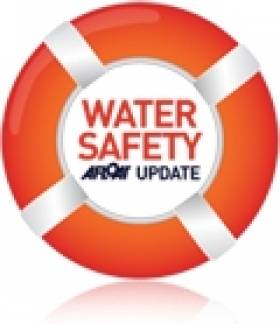Displaying items by tag: drown
#safetyonthewater – Irish Water Safety (IWS) has appealed to the public to stay vigilant around water and not to become another drowning statistic. This appeal comes in the wake of IWS drowning statistics for 2013 which recorded 91 drownings, the lowest for 78 years.
Following a particularly hot two weeks in July 2013 during which thirteen tragically drowned, IWS noted a marked decrease in the number of tragedies during the rest of the summer period as the public adjusted their behaviours and attitudes to staying safe. This resulted in an overall total drowning figure of 91 for 2013, the lowest since 1936 when 73 people drowned.
Males were particularly at risk, accounting for 75% of drownings in 2013. Half of all those who drowned were adults aged 30-59. An extract from Irish Water Safety's 2013 Annual Report notes that the highest figure recorded in any one year to date is 235 in 1983. There was an average of 135 drownings each year in the decade to 2013.
Extracts from Irish Water Safety's analysis reveals that*:
60% were accidents, 20% suicides and 20% undetermined (55,19,17)
53% of drownings were aged 30-59 (48); 16% of drownings were aged under 29 (16)
75% of all drownings were male (69)
60% of total male & female drownings were accidental (42 of 69 & 13 of 22)
14% of female drownings were suicide (3); 23% of male drownings were suicide (16)
In the 1970's, we averaged 91 accidental drownings each year. We ended the 00's averaging 55. In the decade to 2013, the figure dropped to 51.
In the 1980's we averaged 207 total drownings each year. We ended the 00's averaging 150. In the decade to 2013, the figure dropped to 135.
Complacency is not an option for anybody as the statistics frighteningly reveal. Although 75% of total accidental drownings were male, the adage 'boys will be boys' is muted by the fact that the vast majority of drownings were not boys at all but grown men - 53% aged 30-59, compared to 16% aged under 29."
It only takes seconds for tragedy to strike and this can so easily be avoided if people take responsibility for their own safety by taking note of the following in advance of any trip:
Swim at Lifeguarded waterways - http://www.iws.ie/bathing-areas-page.html
If there is no Lifeguarded waterway nearby then swim at a recognized, traditional bathing area
Swim within your depth - stay within your depth;
Use local knowledge to determine local hazards and safest areas to swim;
Ensure that ringbuoys are present;
Make sure that the edges are shallow shelving so that you can safely and easily enter and exit;
Only drink alcohol after your aquatic activity has ended. Stay Away From The Edge after you consume alcohol.
Never use inflatable toys at beaches, rivers or lakes.
Man Drowns Trying to Rescue Dog
A man has been pronounced deceased at Lancaster Hospital after being rescued from the River Lune in Lancaster this afternoon.
At 2.12 pm a member of the public called Liverpool Coastguard to report that they could see a man in the water near the weir of the River Lune in Halton. Further information yielded that the man had jumped into the river after his dog had got into difficulty, but that the man himself could not swim.
Liverpool Coastguard tasked Knott End and Morecambe Coastguard Rescue Teams, the Morecambe RNLI inshore lifeboat and hovercraft, swift water rescue technicians from Lancashire Fire and Rescue Services and a rescue helicopter from RAF Valley.
At 3pm the man was recovered and treated by waiting paramedics. He was transferred to Lancaster Hospital but was later pronounced deceased.
Liverpool Coastguard Watch Manager Paul Parkes said:
"This is a tragic incident where a dog owner has entered the water to try and rescue his pet and sadly, has not survived. We understand that for many people, a dog can be like a member of the family, but we would advise that people dial 999 and call the Coastguard if your pet gets into difficulty on the coast as we can send teams with specialist training and equipment to perform a rescue."





























































